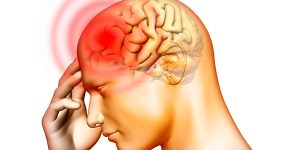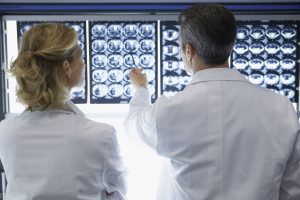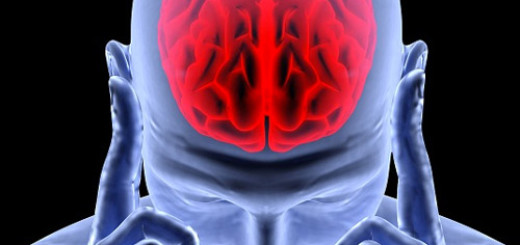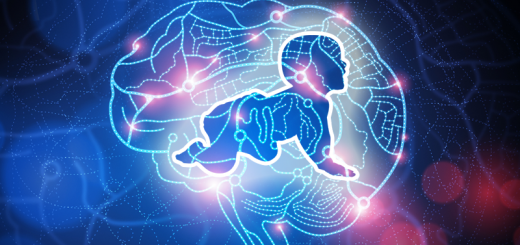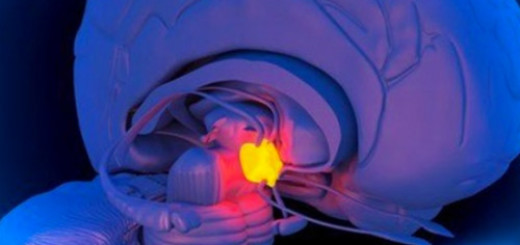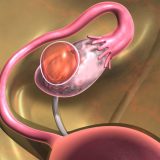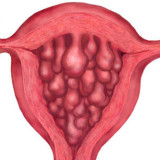A brain cyst is usually a soft formation, filled with fluid. It can have different sizes and location in different parts of the head. The brain cyst are arachnoid and retrocerebellar cysts. You can read about arachnoid cysts of the brain here.
What is a retrocerebellar brain cyst
Unlike arachnoid cyst, retrocerebellar cyst is located directly in the brain tissues, not in the cortex or on the surface. To be more precisely, it occurs at the site of dead brain cells.
It is believed that retrocerebellar cyst is a benign formation, but there are cases when it grew into a cancer.
Retrocerebellar brain cyst, in its turn, also has a classification. We are talking about retrocerebellar arachnoid and liquor cysts. The causes of the latter, among other things, may be congenital.
Retrocerebellar brain cysts causes
Factors contributing to the cyst’s appearance and growth are very diverse, including genetic predisposition.
Among the main causes of brain cyst can be named:
- lack of oxygen and the microelements;
- nerve cells necrosis due to the stroke;
- head injury;
- development of infections and inflammations
Retrocerebellar brain cysts symptoms
Symptomatic manifestation of the cyst depends on its size and development. Of course, there are many other factors – part of the brain, the causes and reasons of the appearance, but the size plays a major role. This is due to the fact that increasing amount of the fluid exacerbate the pressure inside it and on the surrounding brain tissue. Therefore, with the cyst of a large size the patient may feel very bad.
The cystic brain growth is influenced by
- neuroinfection
- chronic circulatory disorders;
- development of autoimmune processes (e.g. multiple sclerosis).
- The aging processes
When increasing the size of the cyst, the following symptoms are observed
- migraine;
- a pulsating feeling in temples;
- any unexplained hearing loss, noise in ears;
- impaired vision – the dichotomy and the blurring of the figures, appearance of the “flies”;
- paralysis of limbs, convulsions;
- coordination problems;
- vomiting, weakness.
Symptoms of the disease may not appear or have other nonspecific symptoms, which makes it difficult to diagnose retrocerebellar cyst. In each case, the degree of symptoms severity depends on the cyst’s kind and its growth.
The size of the cyst
The size of the retrocerebellar cyst may be:
- Up to 2 mm – cyst is a small tumor that does not require treatment.
- Up to 10 mm – these dimensions are considered moderate, and the pathology of the patient is a moderate degree of danger.
- 10 mm cyst is considered to be a dangerous pathological formation, causing serious symptoms and requiring surgery
Intensive growing such cyst can increase in several times within a few months. This phenomenon is typical in the presence of infectious diseases, which provoked the appearance of the cyst.
Diagnosis
The presence of cystic formation in the brain can be diagnosed using the following methods:
- magnetic resonance imaging;
- computer tomography
These methods are the most accurate in the diagnosis of brain cysts and provide the most complete description of the disease. Additional examination methods include:
- Doppler ultrasound (Doppler ultrasound scanner);
- ECG, Echo-KG;
- blood pressure monitoring.
The cysts treatment
Retrocerebellar cyst treatment is a complex procedure that requires a comprehensive approach. If the retrocerebellar brain cyst character is not progressive, and the cyst does not increase in size, then monitoring is prescribed, and the neurologist prescribes a pharmacological treatment. It usually consists of:
- Antibacterial or antiviral treatment. Used in the presence of infectious or autoimmune inflammation, including if it is the cause of the disease.
- Immunomodulators – natural or synthetic substances that regulate the immune system. The goal in this case is to improve the body’s immune barrier so that it is able to cope with the aggressive effects of the autoimmune environment.
Symptomatic treatment of the brain cysts, as well as the elimination of the primary causes of its appearance includes:
- Lowering cholesterol and blood clotting – antiplatelet drugs (conventional aspirin, ticlopidine, pentoxifylline).
- Normalization of blood pressure – enalapril, cornice.
- resorption of adhesions – anticoagulants.
- improved supply of oxygen and glucose in brain tissue – nootropic group (cerebrin, Cerebrolysin, nootrop, vinpotropile, Vinpocetine)
- increased stability of the brain cells structure, increased intracranial pressure – antioxidants.
In case of big size of the cyst, its development and terrible patient condition, when the medical treatment hasn’t succeeded, the surgery becomes necessary.

